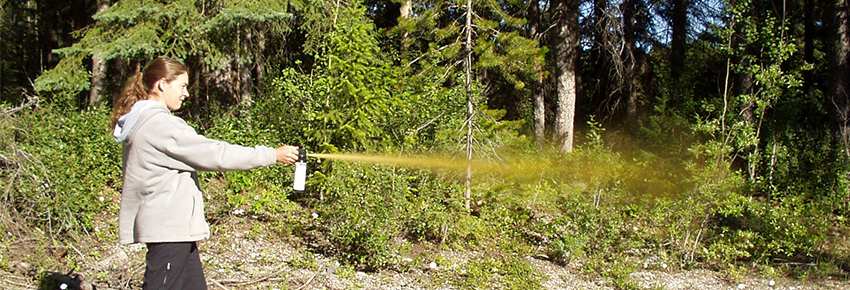
© Alex Taylor
Stay safe & keep carnivores wild
Banff National Park
By taking basic safety precautions for carnivores such as wolves, cougars, and coyotes, we can minimize the risks to human safety and ensure the carnivores in Banff National Park remain wild. Wildness in this case means that these animals retain their natural fear of people.
Keep the Wild in Wildlife (2.4 MB)
Preventing conflicts
- You can prevent carnivores from becoming conditioned to human food. Store your food, garbage, and dog food securely so that carnivores such as wolves, cougars, or coyotes cannot gain access to it.
- Never approach, entice, or feed wildlife.
- Keep your dog on a leash and under physical control at all times. Don't leave dogs unattended outside. Dogs can attract carnivores and may be attacked.
- Carefully supervise small children when they are playing outdoors.
- Pay attention to your surroundings year-round.
Viewing carnivores
- Watching a wolf or cougar can be a once-in-a lifetime experience. But it needs to be done from a safe distance - stay at least 100 metres (or 10 bus lengths) away.
- If driving, pull safely onto the shoulder of the road, and stay in your vehicle.
- Never entice an animal to come closer.
- Use binoculars or a telephoto lens for a ‘close-up' look.
If you are approached by a wolf, coyote or cougar
- If you are approached by a "fearless" carnivore, the best thing to do is act aggressively (stomp your feet, yell, throw something, use pepper spray). The animal may be testing to see if you are possible prey - make it clear that you (and your dog) are not.
- Pick up small children immediately. Stand your ground, but never jump towards the animal. Do not run.
- By acting aggressively, you reduce the risk to yourself and other people, and help prevent the animal from becoming "habituated" to human presence.

Reporting
- All encounters with large carnivores such as wolves, coyotes, or cougars should be reported to the Banff Warden Office by calling 403-762-1470 .
- Carefully try to identify the species, and note the animal's description and behaviour. Also note what may have attracted the animal - e.g. food or garbage, or elk in the area. Field guides can help with identification.
Related links
- Date modified :